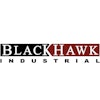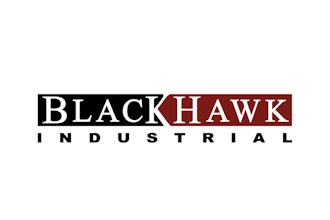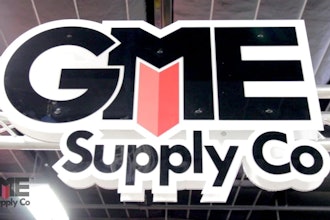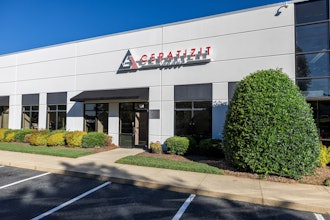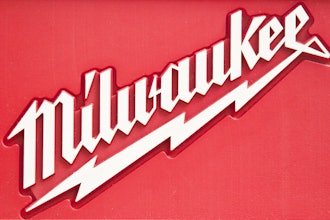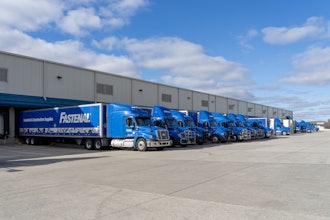1Next Level E-Commerce for Safety Suppliers
Next Level E-Commerce
for Safety Suppliers
Executive Summary
When it comes to the sale of industrial products, e-commerce has become a requirement rather than an
option. For many suppliers in this marketplace, it is mandatory to be able to offer an online means for
customers to purchase products of all kinds – at any time of the day or night, with a few easy clicks.
Despite being top of mind for most business executives, not all market sectors have an equal awareness
of the power of digital commerce. In a recent hybris-led audit of industrial distributor websites, suppliers
of safety products exhibited some specific problem areas related to their websites, and how accessible
their product lines were to their unique customer bases.
This report highlights how 50 safety products distributors scored when assessed for website usability,
content, customer service, and more. It also suggests some critical first steps for moving an e-com-
merce platform towards offering long-term, sustainable business benefits.
Contents
Executive Summary 1
The Critical Issues 2
> Product Differentiation
> Compliance/Standards
> Competition
Safety Suppliers: Understanding the Customer 2
> Industrial Maintenance, Repair & Overhaul (MRO) Buyer
> Health, Safety & Environment (HSE) Manager
> Corporate Purchasing
How Safety Products Distributors Use Their Websites to Sell 3
> E-Commerce Functionality
> Search & Navigation
> Product Information
> Checkout
> Shipping Options
> Customer Service
Areas Where Safety Products Distributors Should Target
E-Commerce Efforts 5
> Empower the customer to make an informed decision
> Search and discovery
> Transparent and seamless commerce and supply chain relationship
Gaps Discovered in E-Commerce Functionality, Content Quality,
and the Customer Experience 5
An Industry Sector in Flux, and Learning Fast 6
The Latest hybris Audit Shows the Industrial Safety Sector Needs Guidance to Improve
2Next Level E-Commerce for Safety Suppliers
ProDUCT DIFFErEnTIATIon
This is especially crucial in an online environment, where
customers may require in-depth specifications and high
resolution photographs of individual items to separate one
product from another. The difference between buying safety
products versus more direct materials (those used in the
manufacture of finished goods, for example) means the
customer may be less knowledgeable and more concerned
with elements like price or delivery.
ComPLIAnCE/STAnDArDS
Organizations like OSHA, ANSI, and UL have regulations and
guidelines that vary in scope and timeline. Many suppliers of
safety products must take responsibility for understanding
which products address the requirements laid out by
regulatory agencies, and relay those to the customer.
ComPETITIon
Many distributors have long sought strategies to provide a
greater breadth of product and service to their customers,
resulting in previously specialized distributors adding product
lines – like safety or janitorial/sanitation – that appeal to a
broader variety of customers. The result is that niche safety
distributors are increasingly competing with a widening pool of
general line industrial suppliers.
It seems logical that these issues would be the driving factors
for a safety products distributor’s e-commerce functional
requirements. Yet, the audit reveals that many fall short in
offering the in-depth product information and ease-of-use
required by customers in this competitive, information-
driven market.
The Critical Issues
For many distributors of safety products, the number of
individual products and manufacturer-suppliers represented
is vast and varied. many items – like person protective
equipment (PPE) – are sold at high volume and low cost,
but the burden is on the distributor to inform the customer
that not all gloves or safety glasses are the same. Suppliers
are often tasked with managing complex customer issues
relating to:
Safety Suppliers:
Understanding the
Customer
Just as their SKUs can be diverse, for many suppliers
of safety products, the end customer is varied as well.
Purchasers of industrial safety products typically fall into one
of the following categories.
InDUSTrIAL mro BUYEr
(The Maintenance Shop/Plant Engineer) – These individual
purchasers often have a fairly specific and immediate need
and represent a multiple-shift work environment with
facilities running day and night. They judge safety supplies
for their ease of use or “wearability” of PPE, and expect
their suppliers to:
• Offer products and resources 24-7, with ease of use and
speedy delivery topping their list.
• Enable their ability to access product information on-the
go, including via tablet or mobile device.
• Allow for search based on application, rather than just
product names or SKUs.
• Deliver in-depth product content with images to facilitate
specific product replacement.
HSE mAnAGEr
This individual manages the health, safety, and environmental
issues within a manufacturing plant, institution, or commercial
facility, and is commonly tasked with determining which safety
and PPE products are required, and when they are needed. The
HSE manager might be responsible for understanding the prop-
er handling and storage of something like hazardous chemicals,
or for tracking the MSDS for the facility. These individuals:
• Look to suppliers to offer detailed product descriptions, in-
cluding application and regulatory requirements. Technical
specifications and data sheets should be available to them
at all times.
• Require several options for delivery and visibility of stock
to circumvent potential emergency scenarios and ensure
their facilities are in a constant state of compliance.
• Benefit from side-by-side product comparisons.
• May make decisions on critical safety equipment – such as
fall protection devices or emergency eyewash stations –
based on customer or expert reviews of their function and
durability.
CorPorATE PUrCHASInG
These are professional procurement managers responsible for
maintaining purchasing systems and fulfilling orders accurately
3Next Level E-Commerce for Safety Suppliers
and systematically. They may work with maintenance or HSE
personnel to determine which brand of PPE is used most
consistently or is most durable. These people are tied to rate
requirements and specific deliverables, so they must balance
user needs with corporate preferences. These buyers:
• Require accurate product descriptions, order consolidation
for fulfillment efficiencies and achievable SLAs in fill rates
and quality control, and expect computer-assisted invento-
ry replenishment for recurring orders.
• Have pick lists of hundreds of items, including nested or
kitting requirements, and may have internal part/SKU
listings that can be filled by multiple vendors that meet the
component specifications.
• Need high speed and simple interfaces, with spreadsheet
uploads or portal interfaces – including part numbers and
SKUs to accelerate ordering and fulfillment – with integra-
tion into other enterprise systems.
• Expect the ability to configure product attributes, retrie-
ve relevant pricing, and obtain quotes when dealing with
products that are more complex to order than a simple
part listing.
• Insist on validation and confirmation of order status
throughout the buying process.
Viewing this group as a whole, it is clear that safety distribu-
tors must use their websites to outline application-specific
product details (including product comparison features), re-
gulatory issues, pricing (including special offers and volume
discounts), delivery rates, and clear timelines for delivery.
One issue safety distributors have to deal with that may differ
from suppliers in other product categories is that safety
products – like PPE – might be purchased in cycles, or more
frequently than something like industrial motors. A customer in
this case may be more concerned with ease of procurement –
the actual simplicity of the ordering process itself – than other
factors that would influence the purchase of direct materials, or
an MRO product that affects potential production downtime.
How Safety Products
Distributors Use Their
Websites to Sell
How successful have safety products distributors been at
delivering on the above requirements? This audit reviews 50
safety products distributors’ websites, assessing them on a
range of functional areas.
enabled search by
product code.82%
of sites allowed users to
search for a product name
(free text search).84%
Over half permitted users
to filter search results by
product attributes.
Fewer than one in
three helped users by
suggesting product
names as they typed.
50%
<1/3
E-CommErCE FUnCTIonALITY:
Of the 50 companies reviewed, a number had no e-commerce
functionality. The level of sophistication of these sites could fall
into three distinct categories:
• Highly functional. These sites offer comprehensive search
and navigation, an ability for customers to easily track
orders and generate invoices, safe and efficient checkout,
and clear information resources – from customer service
and shipping to product specs.
• Some functionality. These sites tend to offer some level
of e-commerce functionality. However, this may be limited
and lacking in ease-of-use. The biggest gaps in functiona-
lity for those sites offering some e-commerce were related
to thoroughness of delivery options. Other limitations
involved the casual user’s inability to view price informa-
tion, delivery options, or other related details without first
setting up a log-in account.
• Low functionality. These types of sites might offer a con-
tact form or phone number to facilitate orders, but offer no
true e-commerce functions.
A review of specific core areas yielded the following insights.
SEArCH AnD nAvIGATIon:
While the safety products distributors’ websites performed
well in basic search functionality, there are opportunities to
provide clarity to users through more robust visual and sug-
gestion cues.
4Next Level E-Commerce for Safety Suppliers
ProDUCT InFormATIon:
The audit revealed some basic functionality gaps, along with a
clear need for more in-depth information on product specifica-
tions and inventory availability.
CUSTomEr SErvICE:
While safety products distributors scored well in the basic
customer service categories (contact information and ease of
ordering), they showed deficiencies in “feedback” areas:
The “add to cart” button
is clearly visible for two-
thirds of audited websites.
show whether the item
is in stock.
2/3
feature technical
specifications.
percent featured an email/
contact form.
offered a customer forum
where users could solicit
the opinions of others.
allow users to download
a PDF product sheet or
manual.
offer links to customer
or expert reviews.
of the audited sites made
it clear that the checkout
process was secure.
had an easily visible phone
number.
offered a FAQ section.
78%
78%
76%
94%
12%
feature a product
comparison option.
of sites considered
“easy” to find shipping
information.
While most made it fairly easy for customers to
determine how to create an account or place an
order, information on shipping was far less visible.
36%
gave users the ability to
set up an account online.2/3
allow users to pay by
credit card.
CHECKoUT:
Of those with e-commerce:
of the 50 audited sites made it clear they
offered next day deliver.
made a point to tout free shipping
options, and another four made it clear
they offered Saturday delivery.
8
4
SHIPPInG oPTIonS:
Shipping options – including key selling points like free or next
21%
8%
12%
88%
22%
36%
5Next Level E-Commerce for Safety Suppliers
EmPoWEr THE CUSTomEr To mAKE An
InFormED DECISIon
• Product comparison, and the ability to hide similarities.
• Product reviews.
• Videos, photos, and blogs embedded with the product
information originating from manufacturer, distributor, or
customers.
• Product information, schematics, user guides, and
standards certification.
SEArCH AnD DISCovErY
• Auto recommend search parameters.
• Category and faceted search.
• Personalized catalogs for industries and users.
• Product and accessory recommendations based upon past
buying and current browsing behavior.
TrAnSPArEnT AnD SEAmLESS CommErCE
AnD SUPPLY CHAIn rELATIonSHIP
• Integrating inventory availability into the commerce
experience to show units available, and presenting
alternative products if a product is unavailable.
• Present alternative delivery methods at the time of sale,
like Saturday delivery or “order by 5pm for next day
guaranteed delivery.”
• Select shipping options by product and order, including
shipping discounts for “orders over $200” or another
threshold.
Areas Where Safety Prod-
ucts Distributors Should
Target E-Commerce Efforts
The process of implementing and evaluating e-commerce
solutions can be daunting. The following defines a number of
key components that distributors of safety products should
consider when enhancing existing technology or installing a
new commerce platform.
Gaps Discovered in
E-Commerce Functionality,
Content Quality, and the
Customer Experience
Based on the results of this audit, it is clear that safety
products distributors are, as a group, adequately serving their
customers in only a few limited areas. While most of them offer
indicated that the
quality and sophistication
of product content
said they needed to focus
on making our web expe-
rience as easy and appeal-
53%
percent of those surveyed
say they have a sophisti-
cated system in place but 45%
54%
are open to other platforms if it makes sense, but
only eleven percent of total companies surveyed
say they are completely satisfied with their
current e-commerce functionality.
(photos, videos, product descriptions) needed
improvement.
ing as a consumer online shopping experience.
says the product content
aspect is an overwhelming
prospect.
reports that a lack of
IT capabilities hampers
them.
indicates the company
is troubled by a lack
of clarity on the ROI of
e-commerce.
1in5
1in6
1in8
some e-commerce functionality, it is evident that more robust
product content and clear comparison features, related to both
product features and supplier delivery rates/times, would be a
good way to target customer needs specific to this industry.
A recent survey of the Industrial Distribution audience asked
safety distributors how they think their companies fare when
it comes to e-commerce, and whether the strategies they
have in place are successfully overcoming the hurdles. The
following results illustrate the shortcomings related to ease-
of-use, and a lack of in-depth product information.
Despite exhibiting a basic understanding of the
vulnerabilities of their websites, safety distributors cite
varied challenges as impediments to moving forward:
6Next Level E-Commerce for Safety Suppliers
An Industry Sector in Flux, and Learning Fast!
As industrial safety distributors continue to broaden and enhance their product offerings through acquisition and organic
additions, the marketplace will become an even more competitive landscape.
The survey evidence shows that the industrial safety market is on the verge of substantial change, although many distributors
seem bewildered by the operational and technical hurdles.
It is clear that distributors want to improve their reach, revenues, and margins by expanding their e-commerce resources, and
critically important that they move rapidly without delay.
For a no-obligation website audit – or to see where your site ranks in comparison to other safety distributors,
please feel free to send an email request to: [email protected]
About hybris software
hybris software, an SAP Company, helps businesses around the globe sell more goods, services and digital content through every touchpoint, channel and device.
hybris delivers OmniCommerce™: state-of-the-art master data management for commerce and unified commerce processes that give a business a single view
of its customers, products and orders, and its customers a single view of the business. hybris’ omni-channel software is built on a single platform, based on open
standards, that is agile to support limitless innovation, efficient to drive the best TCO, and scalable and extensible to be the last commerce platform companies
will ever need. Both principal industry analyst firms rank hybris as a “leader” and list its commerce platform among the top two or three in the market. The same
software is available on-premise, on-demand and managed hosted, giving merchants of all sizes maximum flexibility. Over 500 companies have chosen hybris,
including global B2B sites W.W.Grainger, Rexel, General Electric, Thomson Reuters and 3M as well as consumer brands Toys“R”Us, Metro, Bridgestone, Levi’s,
Nikon, Galeries Lafayette, Migros, Nespresso and Lufthansa. hybris is the future of commerce™. www.hybris.com | [email protected]
Version: September 2014 Subject to change without prior notice © hybris
hybris is a trademark of the hybris Group. Other brand names are trademarks and registered trademarks of the respective companies.
Next Level E-Commerce for Safety Suppliers
This report highlights how 50 safety products distributors scored when assessed for website usability, content, customer service, and more. It also suggests some critical first steps for moving an e-commerce platform towards offering long-term, sustainable business benefits.
Latest in Home
BlackHawk Adds McNutt as Northeast Region GM
September 16, 2025
Ferguson Reports Strong Results to Finish '25
September 16, 2025
Wesco Invests $10M in Procurement Software Startup
September 15, 2025

